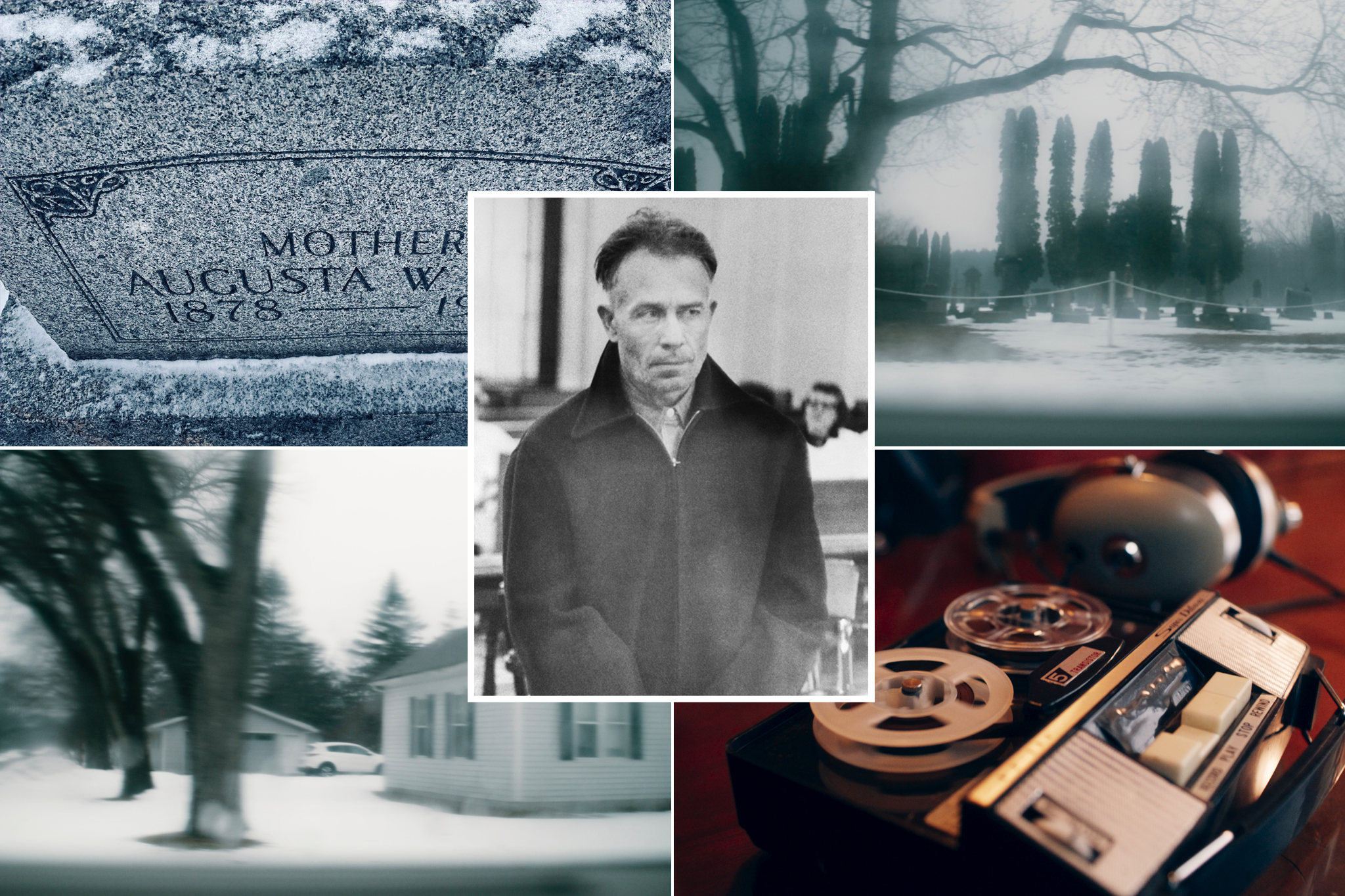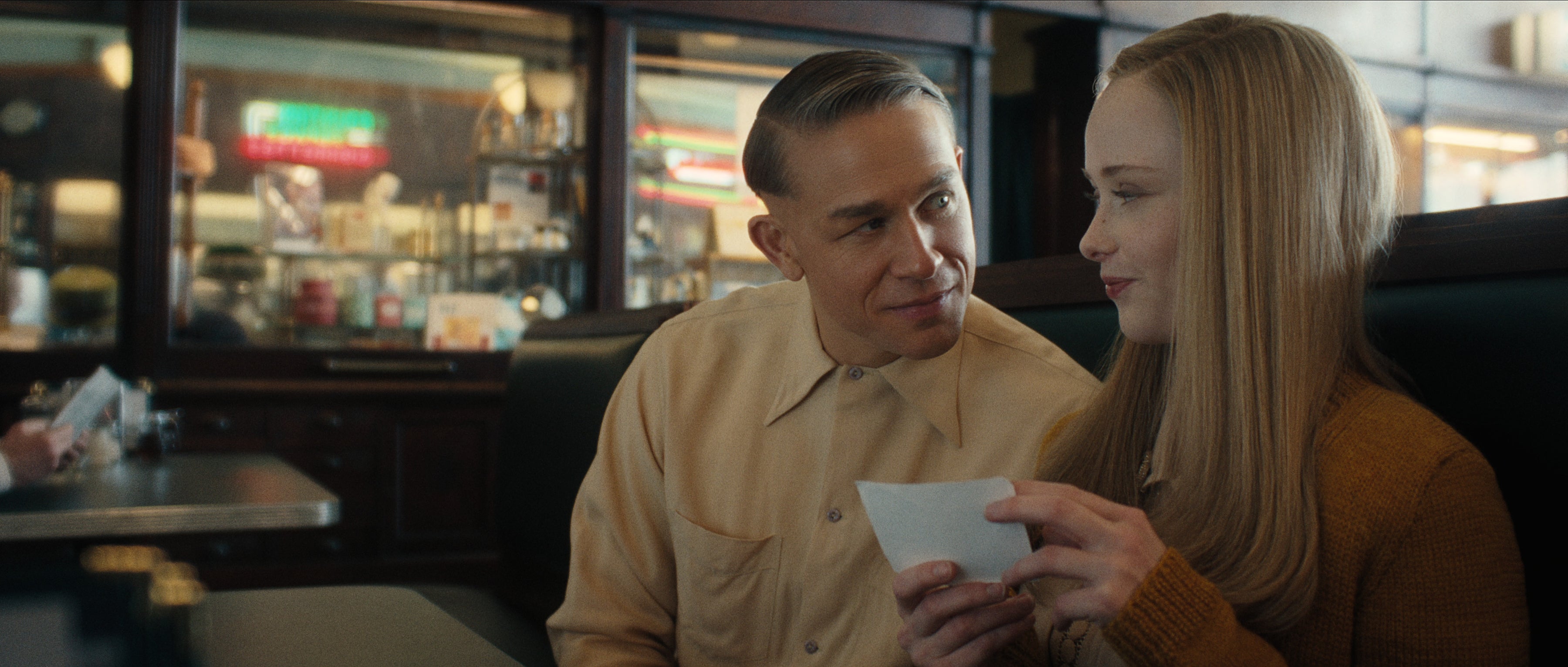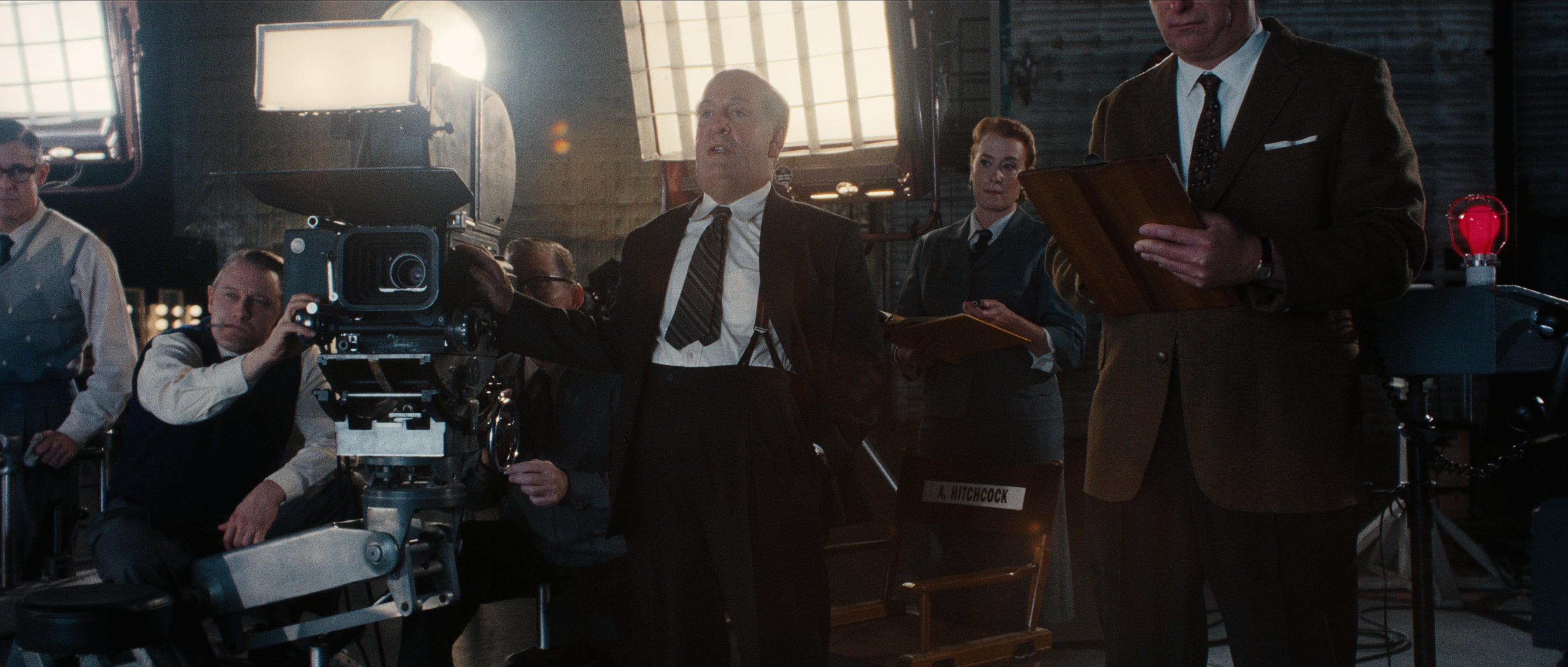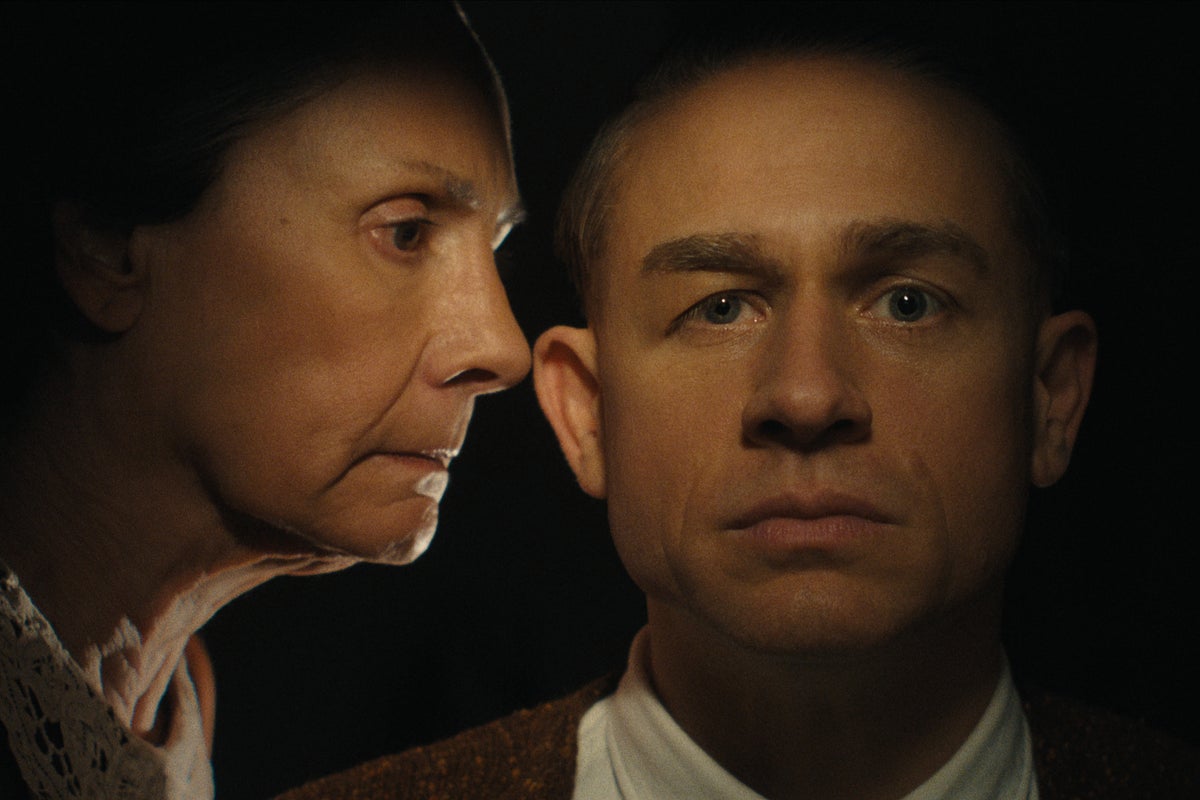In November 1957, police in the aptly named Plainfield, Wisconsin, entered the remote farmhouse of 51-year-old handyman Ed Gein after he’d been arrested in connection with the disappearance of a local shopkeeper. What they uncovered inside would inspire some of the greatest horror films of the 20th century, including Alfred Hitchcock’s 1960 classic Psycho. The shopkeeper, 58-year-old Bernice Worden, had been strung upside down, decapitated and “dressed out like a deer”, authorities said. After searching Gein’s house, police found a nightmarish array of paraphernalia made from human remains, including face masks, bowls made from skulls, and, most horrifying of all, a “woman suit” crafted from female skin. The local sheriff, Art Schley, was reportedly so disturbed by the scene that those close to him attributed it to his untimely death of heart failure aged 43 in 1968. He would not live to see Gein’s trial.
While Gein has inspired fictional psychopaths such as Psycho’s Norman Bates, Leatherface in Texas Chainsaw Massacre (1974) and Buffalo Bill in Silence of the Lambs (1991), he has never been directly reincarnated in a major Hollywood film or TV series – until now. The so-called “Butcher of Plainfield” is the latest subject in Ryan Murphy’s controversial Monster anthology, which has previously dramatised the crimes of Jeffrey Dahmer in 2022 and the Menendez brothers in 2024. British actor Charlie Hunnam plays Gein in this new instalment, which looks set to explore the killer’s troubled upbringing and obsession with his mother, as well as his legacy in Hollywood (Tom Hollander has been cast as Hitchcock in the series).
Unlike Dahmer or his murderous contemporary John Wayne Gacy, Gein was not a prolific killer — he only had two known victims; the rest of his human accessories were crafted from corpses he’d robbed from cemeteries. “The two women Gein killed, he executed very swiftly, just because they reminded him of his mother, and he probably ran out of corpses in the local graveyard,” true-crime author Harold Schechter tells me. “I mean, he was basically a necrophile.” It was not the nature of Gein’s killings that created a mythic villain; it was who he was and what he did with the bodies afterwards. “In every community, there is some house off the beaten path where kids tell stories that some monster lives there. It’s like Boo Radley and To Kill a Mockingbird,” says Schechter. “But in the Gein case, it was true. There really was this monster living in this ramshackle house off the beaten path. He was like some fairytale ogre come to life.”
In the late 1980s, Schechter travelled to Plainfield, where he interviewed Gein’s neighbours, people he had known and the judge who presided in his case, culminating in his 1989 book, Deviant: The Shocking True Story of the Original “Psycho”. The book helped bring Gein into the mainstream consciousness. “I actually thought I was inventing a new literary genre, because I didn’t think of it as true crime. I thought of it as true horror,” says Schechter.
Gein had an isolated upbringing. His father, George, was a violent alcoholic and his mother, Augusta, was a domineering, religious fanatic who instilled in him a toxic fear of women and sexuality. Gein nevertheless idolised her – a feature that inspired Bates in Psycho and the famous line, “A boy’s best friend is his mother.” When Augusta died in 1945, Gein was devastated and set about boarding up rooms used by his mother while he lived in increasingly squalid conditions in a small room off the kitchen. As Schechter writes in Deviant, he had “lost his only friend and one true love. And he was absolutely alone in the world.”
After his arrest, Gein confessed that between 1947 and 1952 he had made as many as 40 nocturnal trips to local cemeteries, slipping into a “trance” as he exhumed the bodies of recently buried corpses. Investigators later verified evidence of at least 10 such grave robberies across three graveyards. In the years following Augusta’s death, Gein had begun fashioning a “woman suit”. According to forensic psychologist and author Katherine Ramsland, the garment was intended to allow him to “become his mother – to literally crawl into her skin”. To achieve this, he needed fresh corpses resembling Augusta herself. During questioning, Gein admitted to killing 51-year-old tavern owner Mary Hogan, who had vanished in December 1954. Her severed head was discovered in his farmhouse – though Gein claimed to have no memory of the circumstances of her death. The killer also denied having sex with the bodies he exhumed, explaining: “They smelled too bad.”

Gein’s background raises the question of whether monsters are born or made. Hitchcock’s film centred on his antagonist’s sexual repression, framed in the context of post-war America. “Polite society burdens us with the fiction that these urges do not exist,” Hollander’s Hitchcock says in an early episode of Monster. “That transforms these urges into secrets we must hide. These secrets make us sick.” In a recent interview with The New York Times, Murphy and his co-creator Ian Brennan claimed their focus was less on Gein’s mental illness and more on how the criminal justice and mental health systems handled him. “To me, what’s interesting is not so much the crimes but everything else that surrounds the crimes,” Murphy said. “If you walk away from Ed Gein and all you want to talk about are the two murders, well, that says a lot about you.”
Gein was arraigned in court on murder charges in late 1957, but was declared unfit to stand trial after being diagnosed with schizophrenia. He spent a decade in mental health institutions before authorities determined he was capable of participating in his own defence, and he finally faced court. In the end, the jury returned a verdict of guilty but legally insane, and Gein was sentenced to life in a psychiatric institution, where he died quietly of respiratory failure in 1984 at the age of 77.

Schechter believes it’s “possible to feel a certain amount of sympathy for Gein because of the conditions under which he lived”. He believes he lacked the truly evil core that manifested itself in people like Dahmer and Gacy, who derived pleasure from torturing their victims. “Once [Gein] was arrested and put in these institutions, he was just a harmless old guy, living better than he’d ever lived before… From what I’ve seen, Ryan Murphy and his collaborators have turned him into much more of a serial killer than he really was.” Schechter worries, for instance, about scenes depicting Gein with a chainsaw, which he “never used”, and torturing a young woman played by influencer-turned-pop-star Addison Rae: “That’s not what Gein did at all.”

Watch Apple TV+ free for 7 day
New subscribers only. £9.99/mo. after free trial. Plan auto-renews until cancelled.
Try for free
ADVERTISEMENT. If you sign up to this service we will earn commission. This revenue helps to fund journalism across The Independent.

Watch Apple TV+ free for 7 day
New subscribers only. £9.99/mo. after free trial. Plan auto-renews until cancelled.
Try for free
ADVERTISEMENT. If you sign up to this service we will earn commission. This revenue helps to fund journalism across The Independent.

Murphy has long faced criticism for taking creative licence with notorious murderers, a debate that was particularly intense with Dahmer, whose crimes largely took place in the 1980s. Critics argued that the show risked glamourising Dahmer, portraying him with a level of nuance and charisma that could overshadow the suffering of his victims and their families, many of whom are still alive. With Gein, Murphy is retreating into the safer territory of the 1950s (and even further still with the forthcoming fourth season of Monster, centred on Lizzie Borden, a young woman acquitted of axe murder in the 1890s). Despite his fears about the historical accuracy of Murphy’s adaptation, Schechter believes these stories are fair game. “They serve some kind of purpose in helping people confront and control their fears,” he says. “Turning these unspeakable acts into a story, gives you a sense of control over them.” As Hunnam’s Gein says in the trailer, staring into the souls of the viewer, “You’re the one who can’t look away.”




